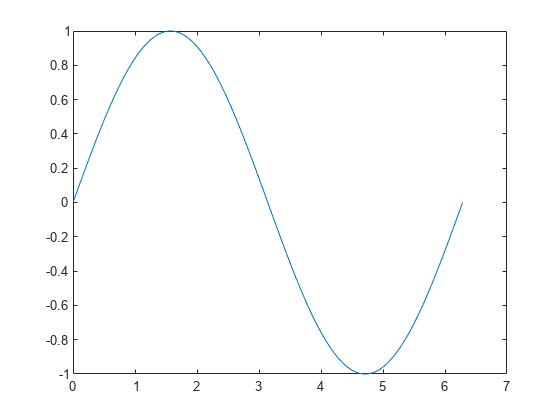命令行窗口
在命令行中输入语句
说明
您可以在命令行窗口的命令行中输入单个语句,命令行由提示符 (>>) 指示。在您输入语句后,命令行窗口会显示结果。
例如,要创建变量 a,可以在命令行中键入 a = 1,然后按 Enter 键。MATLAB® 会将变量添加到工作区,并在命令行窗口中显示结果。要隐藏输出显示,请用分号结束语句,例如,a = 1;。
如果未指定输出变量,MATLAB 将使用变量 ans(answer 的缩略形式)来存储计算结果。对于每一个返回输出值但未将输出值赋给变量的命令,ans 的值会随这些命令而变化。
下表描述了您可以在命令行窗口中执行的一些其他操作。
| 操作 | 执行方式 |
|---|---|
| 在多行中输入多个语句,而暂不运行。 | 在命令行中输入多个语句,在语句之间按 Shift+Enter。 当您在多行中输入成对的关键字语句(例如 |
| 从命令行清除语句而不执行它。 | 按 Escape (Esc) 键。 |
| 重新调用先前的语句。 | 按向上箭头 ↑ 键。命令历史记录窗口打开并显示以前语句的记录。 要重新调用特定语句,请键入该语句的任何部分,然后按向上箭头键。例如,要重新调用命令 |
| 清空命令行窗口。 | 调用 若要在不删除任何文本的情况下清空命令行窗口,请调用 |
| 执行命令行窗口中已存在的语句。 | 选择一个语句,点击右键,然后选择执行所选内容。 |
| 仅执行当前位于命令行中的一部分代码。 | 在命令行中选择代码,然后按 Enter 键。
|
打开 命令行窗口
命令行窗口始终处于打开状态。要将隐藏的命令行窗口显示出来,请在边栏中点击其图标。例如,如果命令行窗口位于其默认位置(即 MATLAB 桌面底部),请点击底部边栏中的命令行窗口图标 。

要将命令行窗口移到桌面的左侧、右侧或底部,请将它或其图标拖到新位置。要将它移至桌面中央,请点击命令行窗口顶部的命令行窗口操作按钮 ,然后选择移动命令行窗口 > 居中。要取消停靠命令行窗口,请选择取消停靠命令行窗口。
要将命令行窗口还原到其默认位置和大小,请转至主页选项卡,然后在环境部分中,点击布局。然后,从预配置的桌面布局选项中选择一个选项。
示例
编程用途
提示
要根据命令行窗口的当前大小来确定其中显示的列数和行数,可以在命令行窗口中键入
matlab.desktop.commandwindow.size。MATLAB 分别返回列数和行数。例如:matlab.desktop.commandwindow.size
ans = 133 24
如果选择将矩阵显示宽度设置为 80 列命令行窗口设置,则列数为 80。有关详细信息,请参阅修改命令行窗口设置。
要在命令行窗口中显示文本或变量值,可以使用
disp函数。例如,以下代码创建一个变量,并在命令行窗口中显示其值。A = [15 150]; disp(A)
您也可以使用15 150
fprintf函数来显示文本。要使用键盘在命令行窗口滚动缓冲区中访问以前的命令和输出,请按 Shift+Tab。光标将移至最后一个输出或命令。使用向上箭头键和向下箭头键在滚动缓冲区内先前的命令和输出之间上下移动。要返回到命令提示符,请按 Tab 键。 (自 R2024a 起)
版本历史记录
在 R2006a 之前推出


